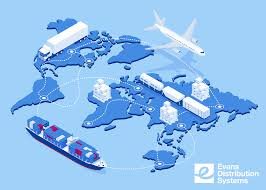Major Developments in Global Trade Agreements: What’s New in 2024?
Introduction: The Evolving Landscape of Global Trade
In 2024, global trade agreements are undergoing significant changes as countries seek to adapt to new economic realities and geopolitical shifts. These developments reflect a broader trend towards regional cooperation, trade diversification, and the integration of new trade principles. As nations navigate the complexities of the global economy, recent trade agreements are shaping international commerce and economic relationships in profound ways.
Key Developments in Global Trade Agreements
1. Expansion of the Regional Comprehensive Economic Partnership (RCEP)
The Regional Comprehensive Economic Partnership (RCEP), which officially came into force in 2022, continues to expand its influence in 2024. The RCEP, encompassing 15 Asia-Pacific countries, including China, Japan, and Australia, is one of the world’s largest free trade agreements. Recent developments include the addition of new member states and the enhancement of trade provisions. For instance, Thailand and South Korea have completed their accession processes, further strengthening the agreement’s economic clout. The RCEP aims to streamline trade regulations, reduce tariffs, and promote economic integration across the region.
2. The African Continental Free Trade Area (AfCFTA) Progress
The African Continental Free Trade Area (AfCFTA) is making notable strides in 2024 as it seeks to create a single market for goods and services across Africa. The AfCFTA, which officially began operations in 2021, has recently expanded its scope to include additional member countries and new trade protocols. Recent developments include the launch of the Pan-African Payment and Settlement System (PAPSS), designed to facilitate cross-border payments and reduce transaction costs. The AfCFTA aims to boost intra-African trade, foster economic development, and enhance regional economic cooperation.
3. The USMCA and Its Impact on North American Trade
The United States-Mexico-Canada Agreement (USMCA), which replaced NAFTA, continues to evolve in 2024. Recent negotiations have led to updates in provisions related to labor standards, environmental regulations, and digital trade. For example, the USMCA now includes enhanced labor rights protections and commitments to address climate change. Additionally, the agreement’s provisions on digital trade and e-commerce have been expanded to reflect the growing importance of technology in cross-border trade. These updates aim to strengthen trade relationships and address emerging issues in North American commerce.
4. Bilateral Trade Agreements and Strategic Partnerships
In 2024, there is a notable increase in bilateral trade agreements and strategic partnerships as countries seek to enhance their economic ties with key trading partners. For example, India and United Arab Emirates (UAE) recently signed a comprehensive trade agreement that covers areas such as goods, services, and investments. Similarly, Australia and United Kingdom have negotiated a free trade agreement that aims to boost trade in sectors such as agriculture, technology, and services. These bilateral agreements reflect a trend towards more targeted and strategic trade relationships in a rapidly changing global economy.
Implications for Global Trade
1. Trade Diversification and Regional Integration
The recent developments in global trade agreements emphasize the importance of trade diversification and regional integration. Countries are increasingly focusing on building economic partnerships within their regions to mitigate reliance on single markets and enhance economic resilience. The expansion of agreements like the RCEP and AfCFTA highlights the growing trend towards regional trade blocs that offer opportunities for economic growth and collaboration.
2. Impact on Global Supply Chains
The evolving trade agreements are also influencing global supply chains. Changes in trade regulations, tariffs, and trade routes affect how goods are produced, transported, and distributed across borders. For example, the USMCA’s updates to automotive trade rules have prompted adjustments in supply chain strategies within the North American automotive industry. Companies are adapting to new trade dynamics by reevaluating their supply chain networks and sourcing strategies.
3. Addressing Emerging Trade Issues
Recent trade agreements address emerging issues such as digital trade, environmental sustainability, and labor rights. The incorporation of these issues into trade agreements reflects a growing recognition of their importance in the global economy. For instance, the inclusion of digital trade provisions in the USMCA and RCEP addresses the need for updated regulations in the digital age. Similarly, environmental and labor standards in agreements like the AfCFTA aim to promote sustainable and equitable trade practices.
4. Opportunities and Challenges for Businesses
The new trade agreements present both opportunities and challenges for businesses. Companies can benefit from reduced tariffs, improved market access, and streamlined trade procedures. However, they also face challenges related to compliance with updated regulations, navigating new trade barriers, and adapting to shifting market conditions. Businesses must stay informed about changes in trade agreements and develop strategies to leverage opportunities and address potential risks.
Conclusion: Navigating the Evolving Trade Landscape
In summary, major developments in global trade agreements in 2024 are shaping the future of international commerce. The expansion of regional trade blocs, progress in bilateral agreements, and updates to existing agreements reflect a dynamic and evolving trade environment. These developments have significant implications for global trade, supply chains, and economic relationships. As countries continue to navigate the complexities of the global economy, staying informed about trade agreements and their impact will be crucial for businesses and policymakers alike.




